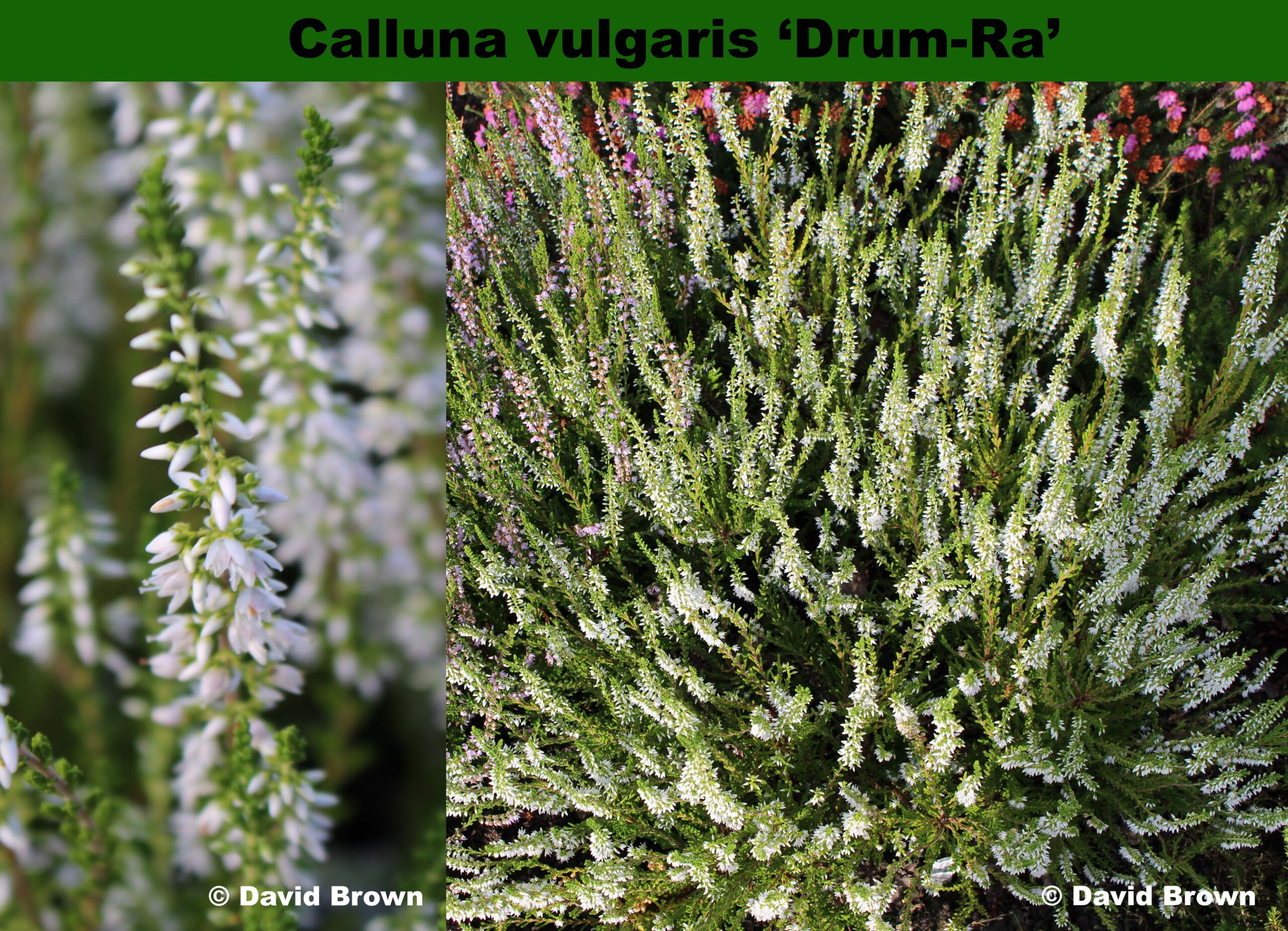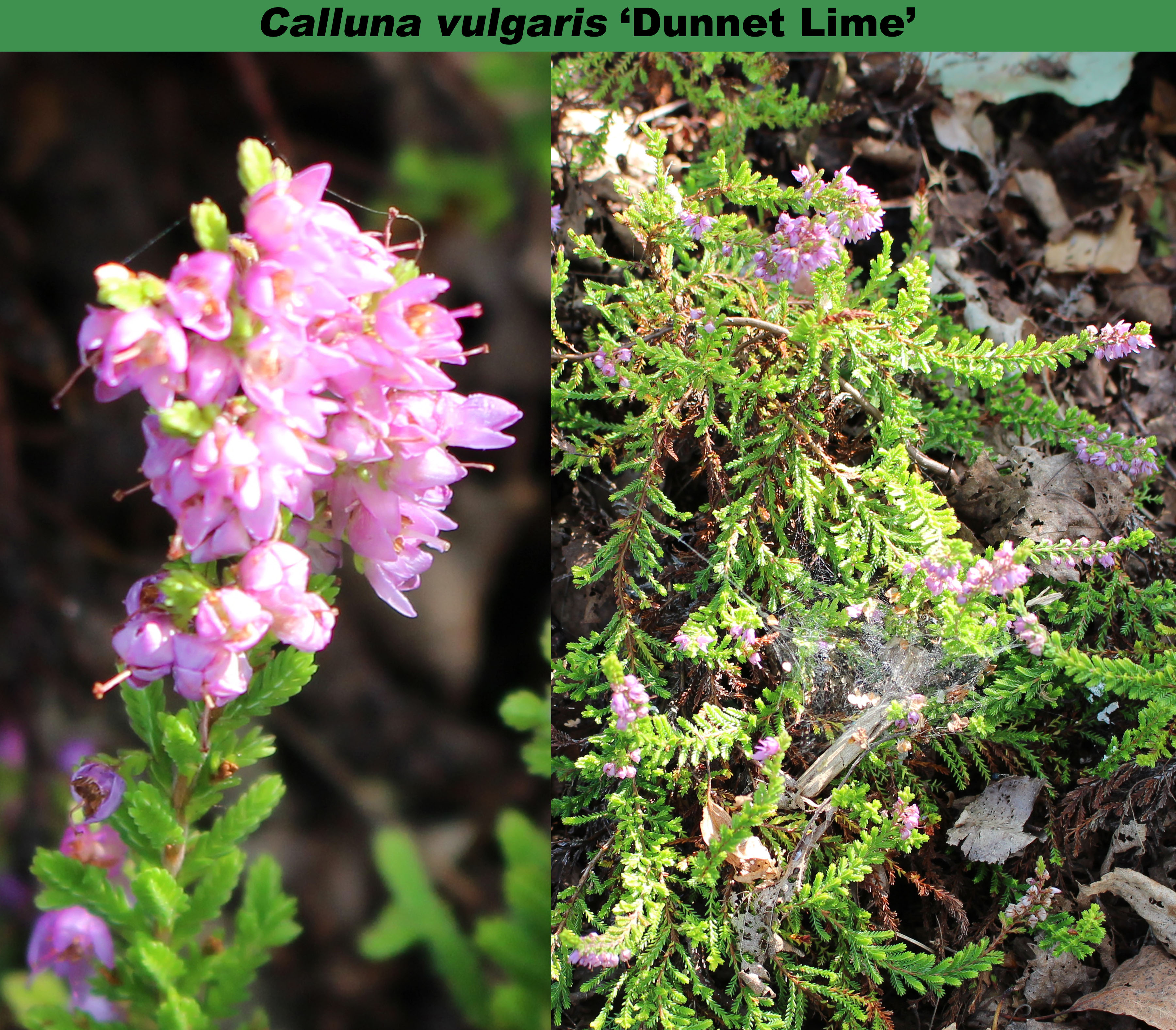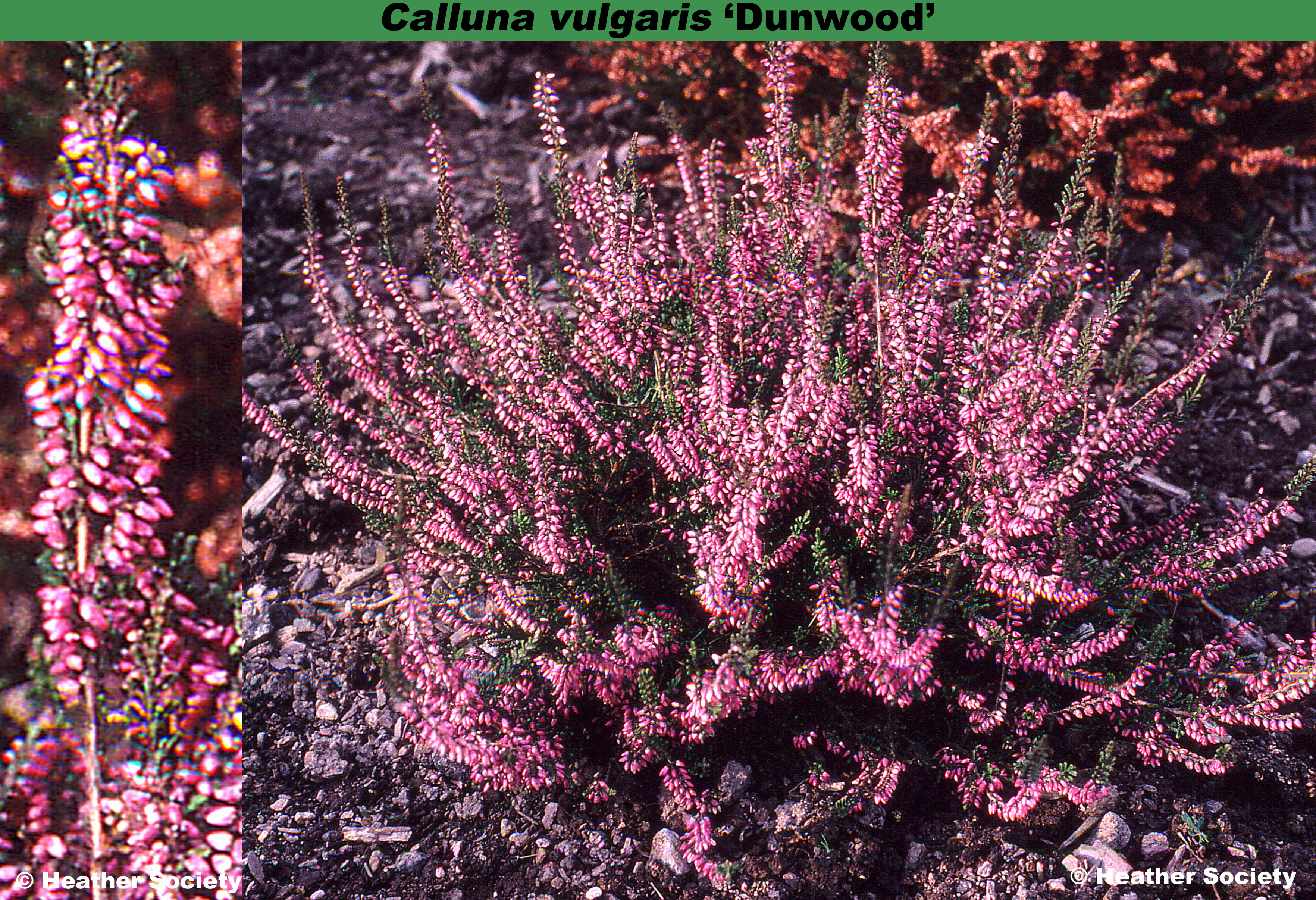Correct name ‘Ross Hutton’
Month: September 2014
‘Drum-ra’
White flowers, abundant in spikes of varying length, VIII–IX; light green foliage; erect habit; height 16–20cm; spread 46–60cm. Named after a small area in the Cairngorm mountains, Scotland.
‘Dunkeld White’
White flowers, VIII–IX; pale green foliage; open, upright habit; height 45cm; spread 55cm. Named after a town in Perthshire, Scotland.
‘Dunkle Sandy’
♤ White buds, IX–XI; yellow foliage turning yellow-brown in winter; broad upright habit; height 31–45cm; spread 31–45cm.
Sport on ‘Sandy‘, found on 28 September 2001 by Fa. Holz. CQ Ericultura 130: 26 (2003). Named by Kurt Kramer.
‘Dunnet Lime’
Lilac-pink (H11) flowers, VIII–IX; lime-green foliage in summer, with orange tips in winter, deepening to red in colder environments; height 10–15cm; spread 31–45cm. It is particularly effective in continental climates.
Wild-collected; found near Dunnet Head, Caithness, Scotland by David McClintock (Platt, Kent, England) in 1972; introduced by P. G. Zwijnenburg in 1976.
Named after Dunnet Head.
‘Dunnydeer’
Large, densely packed, lilac-pink (H11) flowers, VIII–X; dark green foliage; upright habit; height 31–45cm; spread 46–60cm. Named after the cottage of the finder.
‘Dunwood’
♤ Deep mauve (H2) buds, IX–XII; dark green foliage; height 26–30cm; spread 46–60cm. An attractive plant.
Introduced by Mr & Mrs Ray Warner (Barncroft Nurseries, Longsdon, Stoke-on-Trent, Staffordshire, England) before 1977.
Name of a neighbouring hamlet and the name of the road on which the nursery is situated.
‘Durfordii’
Correct name ‘Durford Wood’
‘Durford Wood’
Rarely produces pink (H8) flowers, XI–XII; attractive purple-green foliage with a misty appearance; height 26–30cm; spread 75–100cm. Named after a wood north of Petersfield, West Sussex, where it was found.
‘Dwingeloo Delight’
Long stems of clear amethyst (H1) flowers, VIII–IX; dark green foliage; erect; height 46–60cm; spread 46–60cm. Found by H. A. Verheul and named after the town in the Netherlands where it originated.



